
This weapon grew out of a design study for replacing the 5"/38 (12.7 cm) Mark 12 and was originally planned for the never-built Montana Class battleships. They actually made their first service debut aboard the large aircraft carriers of the Midway class (CVB-41) and later on the gunnery training ship USS Mississippi AG-128 (ex BB-41).
This gun was not as popular as the 5"/38 (12.7 cm) Mark 12, probably because the larger and heavier projectiles and cartridge cases resulted in faster crew fatigue. Essentially, this weapon was simply a longer version of the 5"/38 (12.7 cm) Mark 12 and should not be confused with the later 5"/54 (12.7 cm) weapons which included automatic ammunition feeding provisions.
These guns were gradually removed from the Midway class carriers as weight compensation for growth in other areas. Some of these mountings were then reused on new-construction Japanese destroyers.
At least one mounting still exists at the White Sands Missile Range in New Mexico.
Nomenclature Note: This was the last USN 5" (12.7 cm) weapon that was best known by the gun barrel Mark number designation, although a few works refer to it per its Mark 39 mounting designation. All subsequent 5" (12.7 cm) designs are known by the mounting Mark number designation. See USN Naval Gun Designations for more information.
| Designation | 5"/54 (12.7 cm) Mark 16 |
|---|---|
| Ship Class Used On | USA
Planned for Montana (BB-67) Class Midway (CVB-41) Class Mississippi (AG-128) Japan
|
| Date Of Design | 1940 |
| Date In Service | USN: 1945 Japan: 1960 |
| Gun Weight | 5,361 lbs. (2,432 kg) (without breech) |
| Gun Length oa | N/A |
| Barrel and Bore Length | 270.0 in (6.858 m) |
| Rifling Length | 229.07 in (5.820 m) |
| Grooves | N/A |
| Lands | N/A |
| Twist | Uniform RH 1 in 25 |
| Length Of Rifling | 229.07 in (5.820 m) |
| Chamber Volume | 825.38 in3 (13.525 dm3) |
| Rate Of Fire | 15 - 18 rounds per minute |
- ^Akizuki and her sister Teruzuki were laid down by Mitsubishi in 1959 to a modified USS Fletcher (DD-445) design.
| Type | Separate |
|---|---|
| Projectile Types and Weights 1a | HC Mark 41 Mod 0 with PD fuze 2a: 69.33 lbs. (31.448 kg)
HC Mark 41 Mod 0 with MT fuze 2a: 69.45 lbs. (31.505 kg) HC Mark 41 Mod 0 with VT fuze 2a: 69.19 lbs. (31.384 kg) SP Common Mark 42 Mods 0 and 1 3a: 70.0 lbs. (31.75 kg) Illum Mark 43 Mod 0: 70.0 lbs. (31.75 kg) 4a Illum Mark 48 Mod 0: 69.2 lbs. (31.39 kg) 4a |
| Bursting Charge | HC Mark 41: 7.75 lbs. (3.515 kg) Explosive D
SP Common Mark 42 Mods 0 and 1: 2.14 lbs. (0.97 kg) Explosive D |
| Projectile Length | 26.0 in (66 cm) |
| Cartridge Case Type, Size and Empty Weight | Mark 6: Brass, 127 x 836 mm, 13.04 lbs. (5.91 kg) |
| Propellant Charge | 18.5 lbs. (8.19 kg) SPD or SPDN
Flashless: 19.0 lbs. (8.62 kg) SPDF |
| Muzzle Velocity | 2,650 fps (808 mps) |
| Working Pressure | 18.5 tons/in2 (29,137 kg/cm2) |
| Approximate Barrel Life | 3,070 Rounds |
| Ammunition stowage per gun | Midway and Montana: about 500 rounds
Akizuki: 330 rounds |
- ^The wide availability of ammunition for this and subsequent USN 5"/54 (12.7 cm) guns led the French to use these munitions for their own 127 mm (5") guns.
- ^2.12.22.3Mark 41 projectile bodies could be used with Point Detonating (PD), Mechanical Time (MT) or with proximity (VT) nose fuzes. When used with PD fuzes, they were considered to be HC rounds while those with MT and VT fuzes were considered as AA rounds. Rounds with MT or PD nose fuzes had an instantaneous contact type base fuze. A blind plug was used in place of the base fuze for those projectiles using VT nose fuzes.
- ^Special Common Mark 42 had a windscreen and a thin hood and was strengthened to enhance its armor piercing qualities.
- Bourrelet diameter was 4.985 inches (12.66 cm).
| Elevation | Range | Angle of Fall | Time of Flight | Striking Velocity | Maximum Ordinate |
|---|---|---|---|---|---|
| 1.92 degrees | 4,000 yards (3,658 m) | 2.17 degrees | 5.10 seconds | 2,088 fps (636 mps) | 104 ft (32 m) |
| 3.01 degrees | 6,000 yards (5,486 m) | 3.88 degrees | 8.18 seconds | 1,826 fps (557 mps) | 269 ft (82 m) |
| 4.53 degrees | 8,000 yards (7,315 m) | 6.28 degrees | 11.73 seconds | 1,587 fps (484 mps) | 553 ft (169 m) |
| 6.29 degrees | 10,000 yards (9,144 m) | 9.62 degrees | 15.84 seconds | 1,375 fps (419 mps) | 1,010 ft (308 m) |
| 8.46 degrees | 12,000 yards (10,972 m) | 9.62 degrees | 20.60 seconds | 1,205 fps (367 mps) | 1,715 ft (523 m) |
| 11.14 degrees | 14,000 yards (12,802 m) | 19.97 degrees | 26.07 seconds | 1,095 fps (334 mps) | 2,770 ft (844 m) |
| 14.38 degrees | 16,000 yards (14,630 m) | 26.45 degrees | 32.14 seconds | 1,060 fps (323 mps) | 4,275 ft (1,303 m) |
| 18.18 degrees | 18,000 yards (16,459 m) | 32.85 degrees | 38.71 seconds | 1,057 fps (322 mps) | 6,305 ft (1,922 m) |
| 22.62 degrees | 20,000 yards (18,288 m) | 39.23 degrees | 45.88 seconds | 1,068 fps (326 mps) | 8,970 ft (2,734 m) |
| 24.12 degrees | 24,000 yards (21,946 m) | 51.90 degrees | 63.49 seconds | 1,107 fps (337 mps) | 17,120 ft (5,218 m) |
| 47.40 degrees | 25,909 yards (23,691 m) | 62.47 degrees | 82.49 seconds | 1,148 fps (350 mps) | 28,000 ft (8,534 m) |
| 58.93 degrees | 24,000 yards (21,946 m) | 70.03 degrees | 96.70 seconds | 1,186 fps (361 mps) | 37,680 ft (11,485 m) |
| 85.00 degrees | N/A | N/A | N/A | N/A | 51,600 ft (15,728 m) |
- ^Values from BuOrd OP 1188 page 16 and "Naval Weapons of World War Two" page 143.
| Designation 1c 2c | Single Mount 3c Midway (18) 4c and Mississippi (2) 5c: Mark 39 Japan
Twin Mount
|
|---|---|
| Weight | Mark 39: 33 tons (33.5 mt)
Mark 41: N/A |
| Elevation | -10 / +85 degrees |
| Rate of Elevation | 15 degrees per second |
| Train | about -150 / +150 degrees |
| Rate of Train | 30 degrees per second |
| Gun Recoil | 19 in (48.3 cm) |
- ^Both single and twin mountings were base ring types and had projectile and powder hoists on the axis of the mount.
- ^These mountings used amplidyne all-electric power drives.
- ^A minimum crew of sixteen men were required for the single mounting, with ten in the gun room and six in the handling room. Additional crewmen were required in the lower ammunition spaces.
- ^USS Midway (CVB-41) and USS Franklin D. Roosevelt (CVB-42) had 18 guns as commissioned while USS Coral Sea (CVB-43) had 14 guns when commissioned. These carriers had the number of guns reduced over the years as compensation for weight growth in other areas, with all guns removed from Midway and Coral Sea by 1980. Franklin D. Roosevelt was retired in 1977 at which time she still retained two guns near the stern, one on each quarter.
- ^In addition to the two Mark 39 single mounts, it had been planned to fit USS Mississippi (AG-128) with two Mark 41 twin mounts but none were ever built.


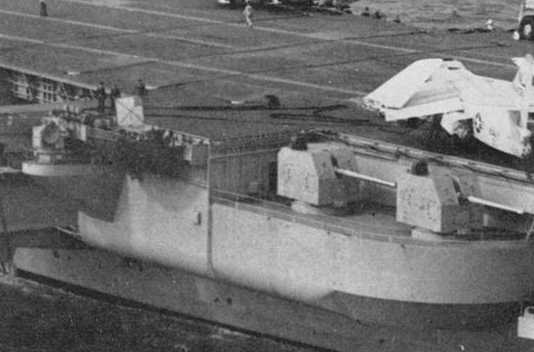
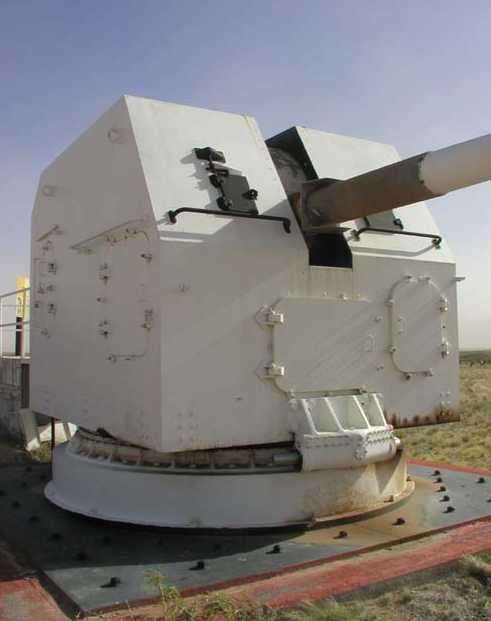
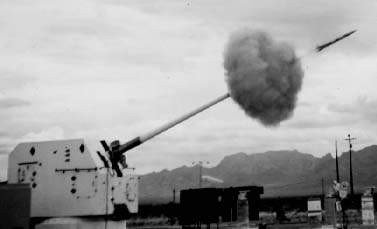
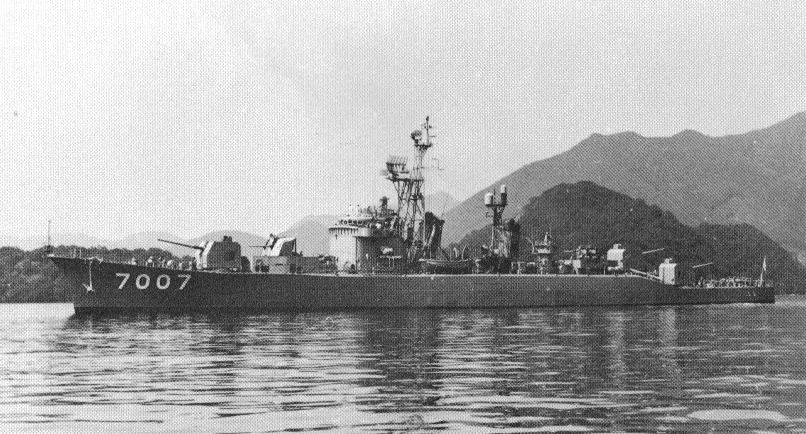
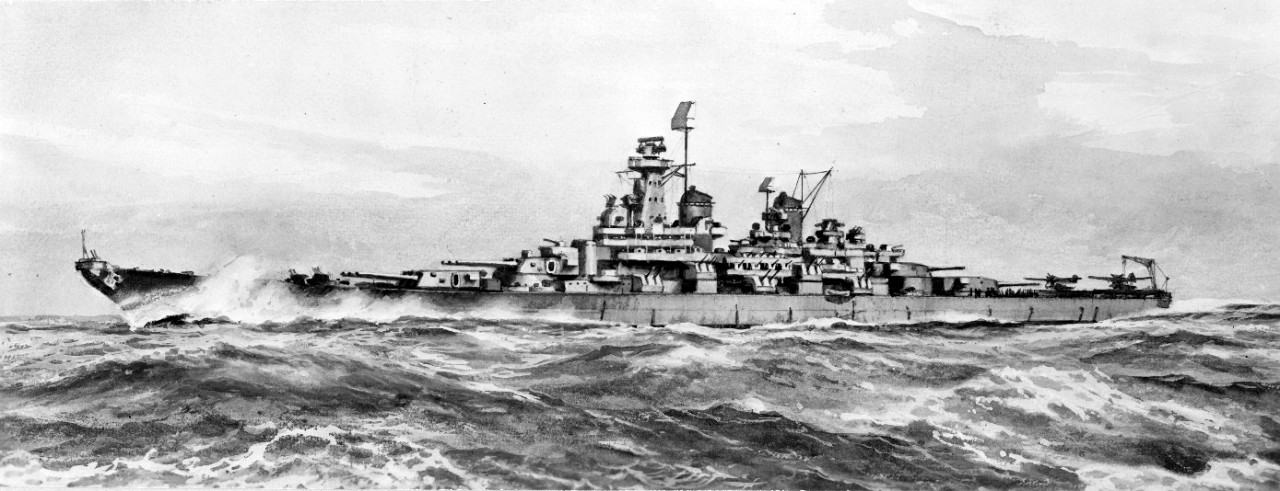

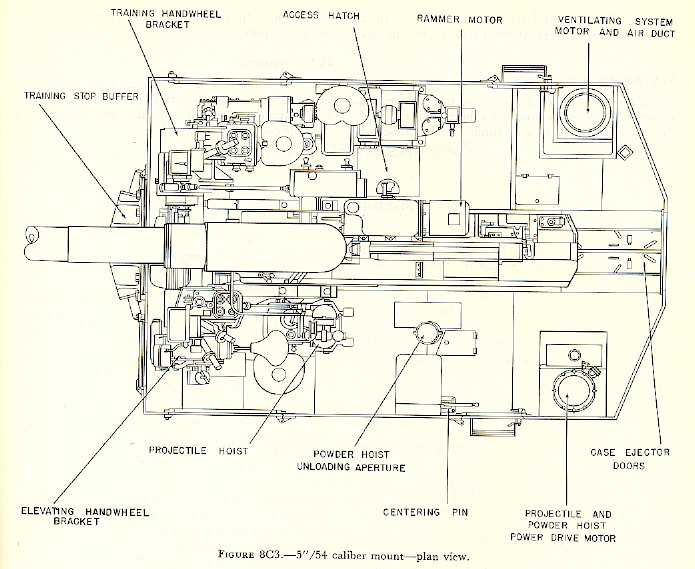
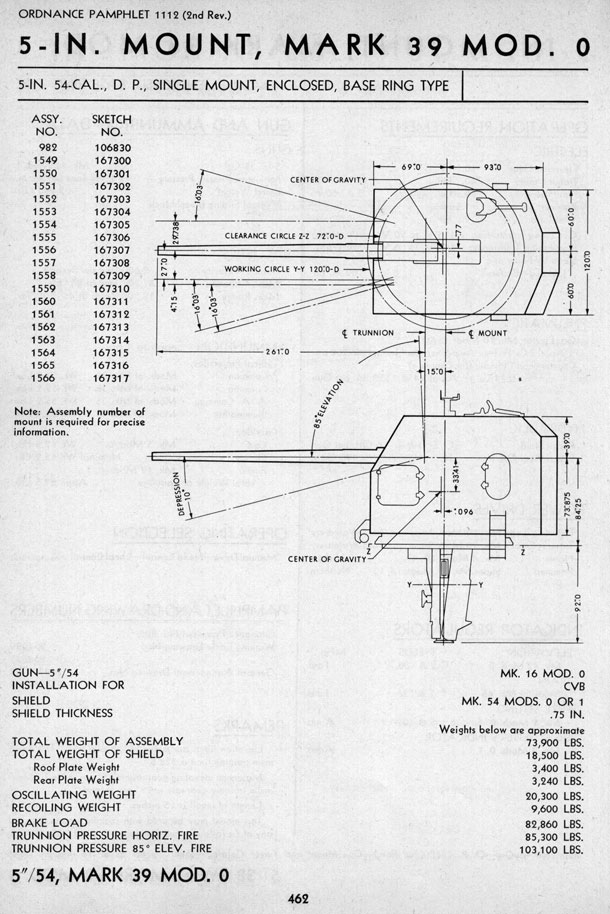
"Jane's Pocket Book 9: Naval Armament" edited by Denis Archer
"Naval Weapons of World War Two" by John Campbell
"US Battleships: An Illustrated Design History," "US Carriers: An Illustrated Design History," "US Naval Weapons" and "The Naval Institute Guide to World Naval Weapon Systems 1991/92" all by Norman Friedman
"Battleships: United States Battleships, 1935-1992" by W.H. Garzke, Jr. and R.O. Dulin, Jr.
"Illustrated Complete Ship's Data JMSDF 1952-98" by Ishibashi Takao
"Naval News in Pictures" Warship International No. 2, 1987
---
"Naval Ordnance and Gunnery - Navpers 16116-B - 1952" by Department of Ordnance and Gunnery, U.S. Naval Academy
"Abridged Range Tables for U.S. Naval Guns: Ordnance Pamphlet No. 1188, 13 June 1944" by Bureau of Ordnance (BuOrd), Department of the Navy
"U.S. Explosive Ordnance - Ordnance Pamphlet No. 1664 - May 1947" by Bureau of Ordnance (BuOrd), Department of the Navy
White Sands Missile Range
---
Special help by Leo Fischer
12 August 2008 - Benchmark
23 March 2012 - Added source and photograph of Yudachi
16 April 2013 - Added link to French 127 mm datapage
22 November 2014 - Added note about Mark 39 designation
18 May 2015 - Redid painting of USS Montana
12 January 2019 - Converted to HTML 5 format, reorganized notes and added mounting sketch
14 April 2020 - Corrected typographical error, minor formatting changes, added data regarding removal of guns
and photograph of Midway port side
14 August 2023 - Revised range table
10 February 2025 - Added guns used on USS Mississippi (AG-128)
